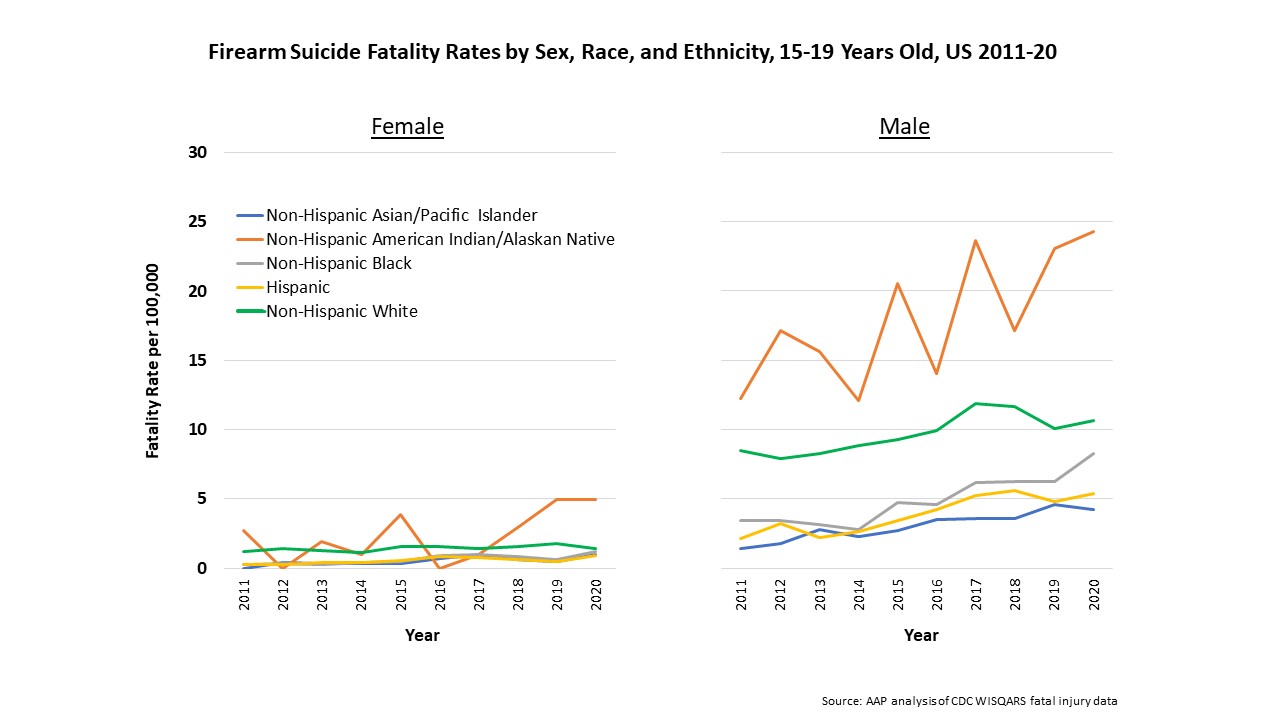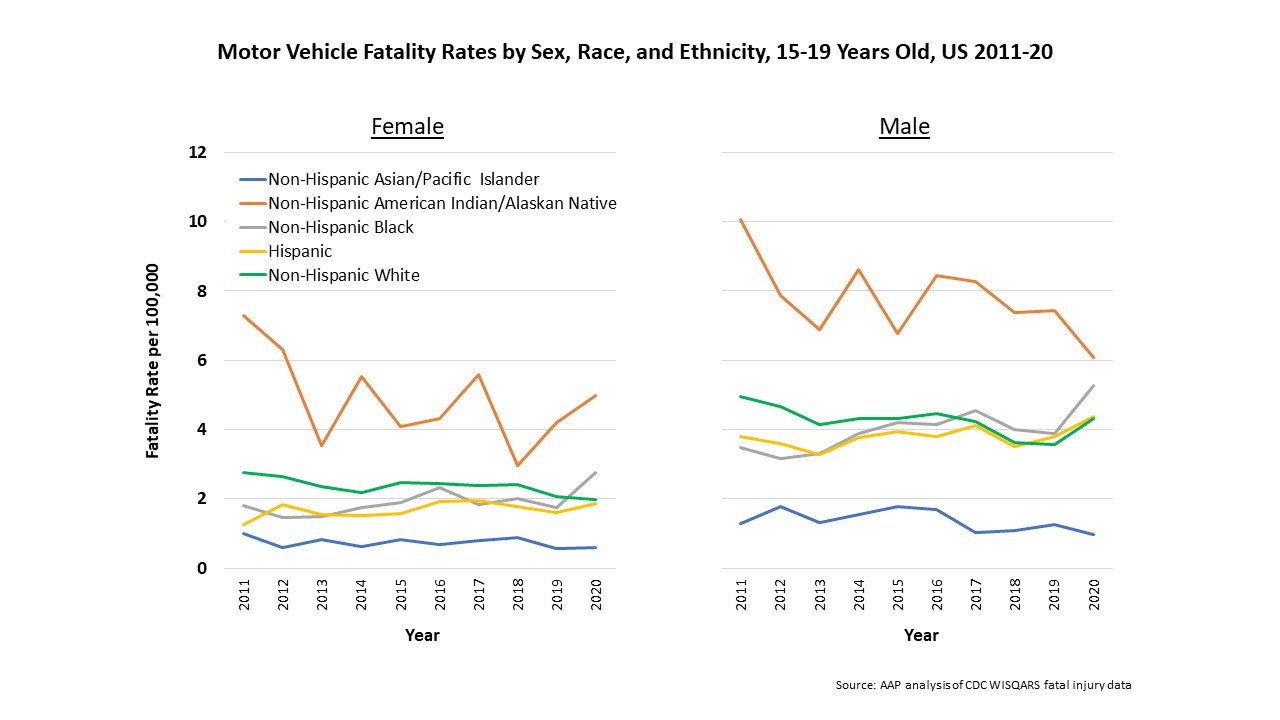Injury Prevention
Injury Prevention 1
134 - Firearm and Motor Vehicle-Related Fatalities: Disparities by Sex, Race and Ethnicity for U.S. Youth 15-19 Years Old, 2011-2020
Publication Number: 134.121

Lois K. Lee, MD, MPH (she/her/hers)
Associate Professor
Boston Children's Hospital, Harvard Medical School
Boston, Massachusetts, United States
Presenting Author(s)
Background:
Firearms and motor vehicle crashes (MVCs) are the leading causes of death in US children 1-19 years old, with highest fatality rates in youth 15-19 years old. The intersection by sex and race and ethnicity on fatality rates from firearms and MVCs is not well understood.
Objective:
To compare fatality rates and trends over time for firearms and MVCs by sex and race and ethnicity among U.S. youth 15-19 years old.
Design/Methods:
This was a cross-sectional analysis of 2011-2020 firearm and MVC fatality rates of US youth15-19 years old from the CDC’s Web-based Injury Statistics Query and Reporting System (WISQARS) database. Population-based rates per 100,000 youth 15-19 years old, by mechanism and intent were calculated by sex, race, and ethnicity. We calculated fatality rates and conducted logistic regression modelling to analyze 10-year linear trends by sex, race, and ethnicity, reporting odds ratios (OR) with 95% confidence intervals (CI).
Results:
From 2011-2020 there were 25,347 firearm fatalities (homicide: 15,708; suicide: 9,081; unintentional: 558) and 25,915 MVC fatalities. Males had the highest fatality rates (firearm homicide: 12.82/100,000; firearm suicide: 7.37/100,000; MVCs: 15.98/100,000), with lower rates for females (firearm homicide: 1.76/100,000; firearm suicide: 1.06/100,000; MVCs: 8.33/100,000). From 2011-2020 the greatest increase in firearm homicide rates were in non-Hispanic (NH) American Indian (AI)/Alaska Native (AN) teens (females 337%; males 135%), then Hispanic females (124%) (Figure 1). The greatest increase in firearm suicides 2011 vs 2020 were in females (NH Black 388%; Hispanic 241%), and NH Asian males (197%) (Figure 2). There were mixed trends for MVCs with greatest increases in NH Black females (54%), NH Black males (51%), and Hispanic females (51%) and decreases for AI/AN males (-40%) and Asian females (-40%) (Figure 3). For firearm homicides, when comparing by sex, race, and ethnicity, NH White males had the highest annual trend increase (OR 1.10, 95% CI 1.08, 1.12) then Hispanic females (OR 1.09, 95% CI 1.05, 1.13). For firearm suicides the highest annual trend increase were in females (NH Black OR 1.17, 95% CI 1.09, 1.26; NH Asian OR 1.17, 95% CI). For MVCs the highest trend increases were also in females (NH Black OR 1.54, 95% CI 1.22, 1.94; Hispanic OR 1.51, 95% CI 1.19, 1.91).
Conclusion(s):
Over the last decade, females had greater relative increases in firearm fatality rates compared to males with significant disparities by race and ethnicity. Examining disparities by injury mechanism will help inform focused prevention efforts among subpopulations of teenagers. .jpg)


